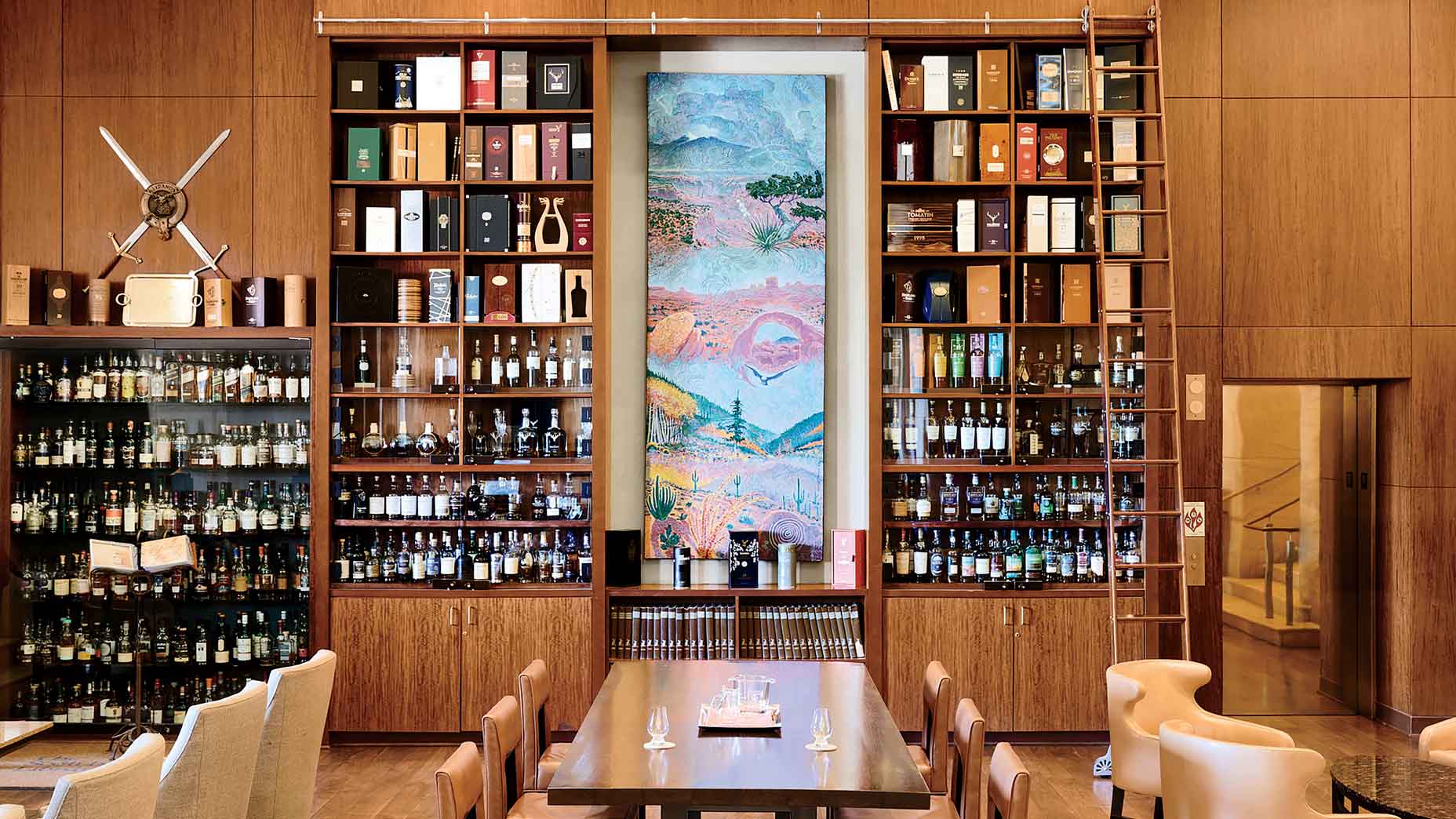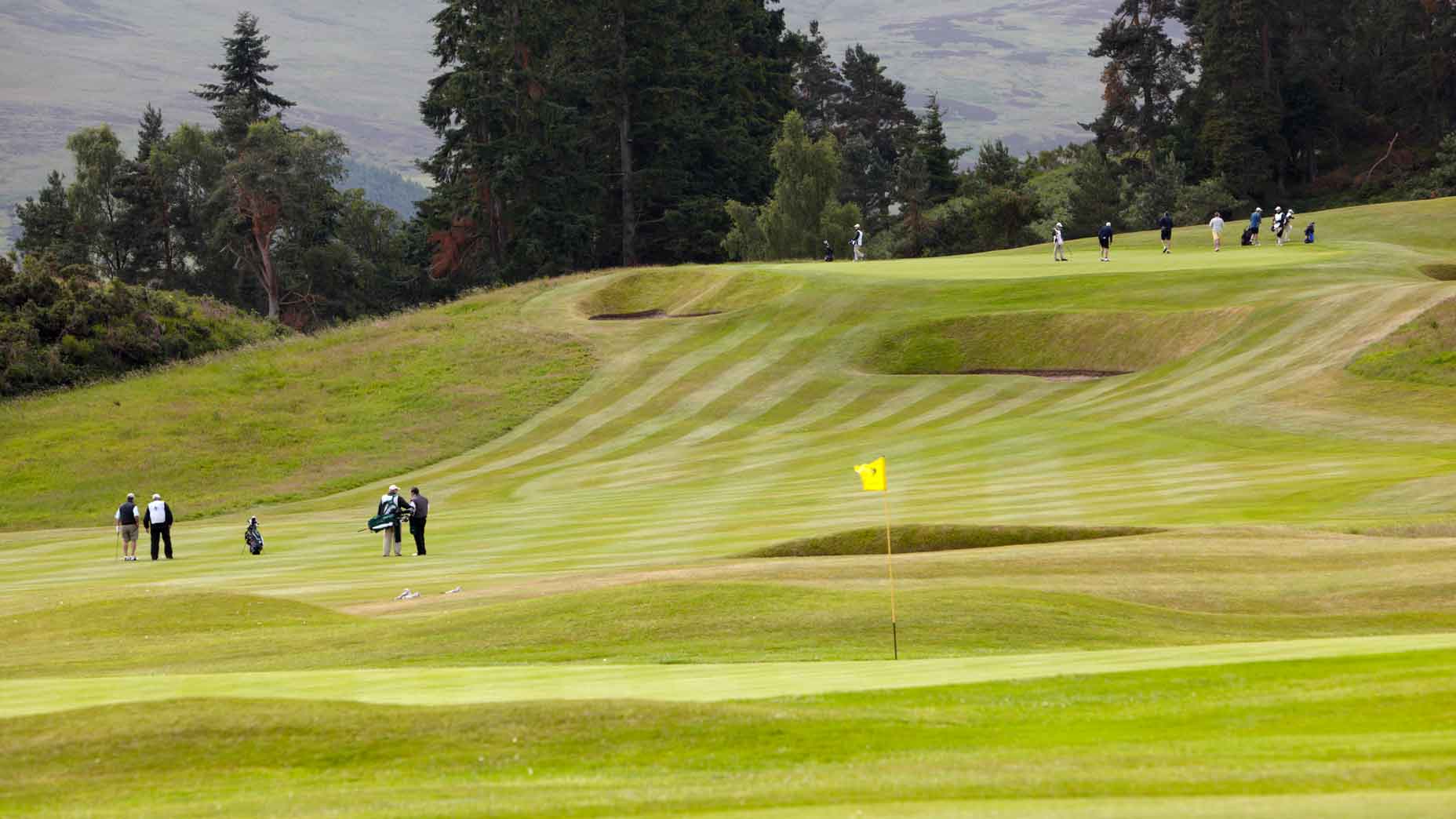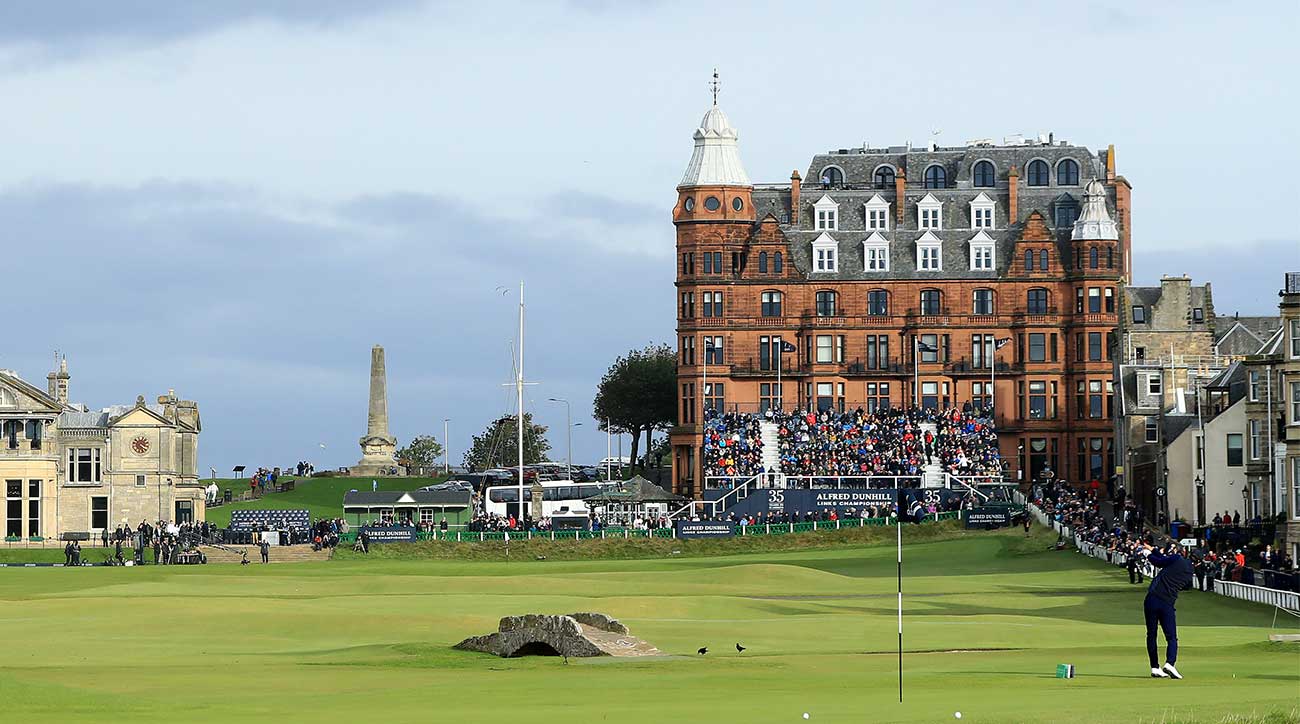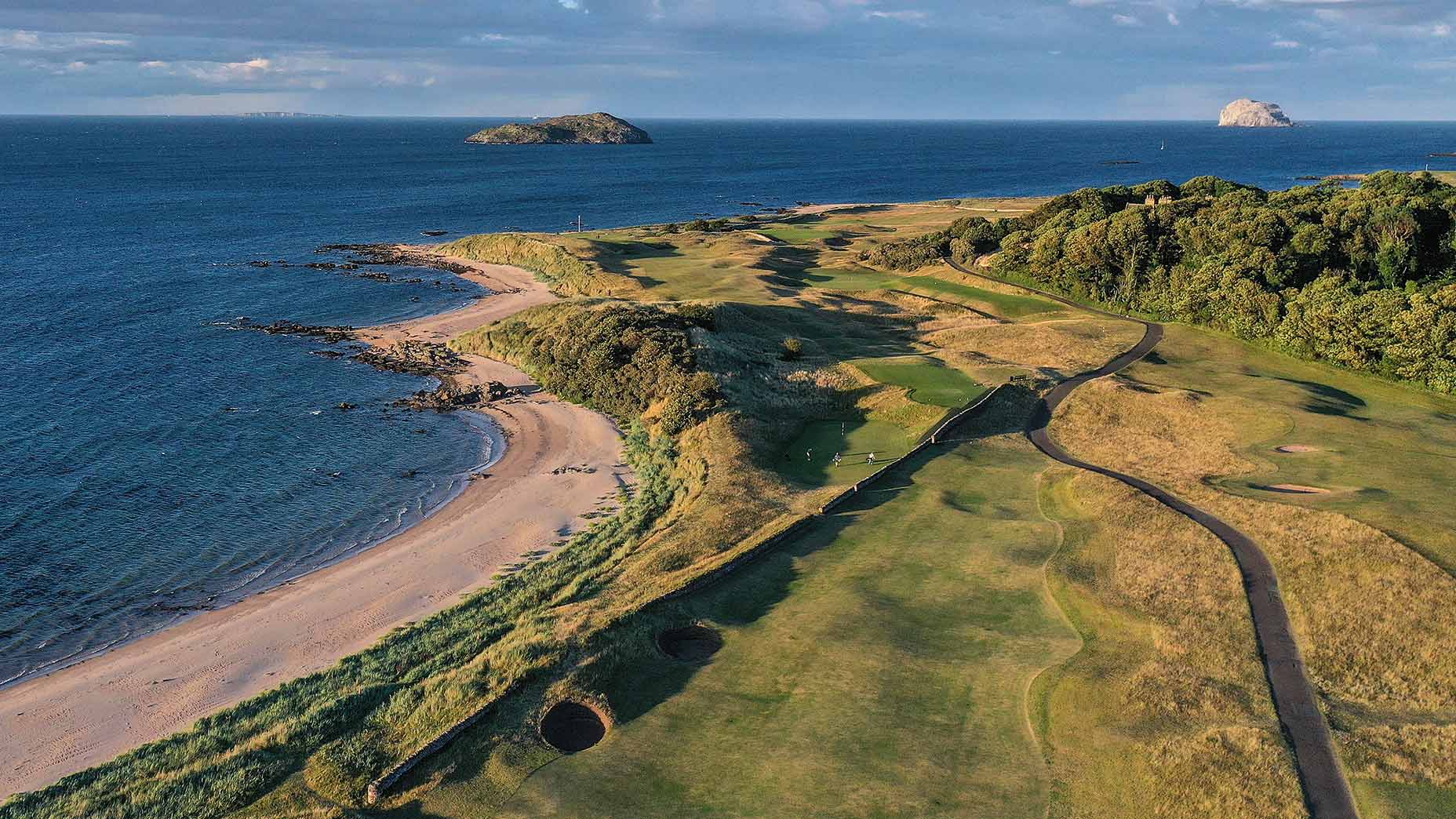Golf in Portugal is growing — in popularity and courses

The 18th hole of the Dunas Course at Terras da Comporta in Grândola, Portugal.
James Hogg
As the greatest British golfer of his generation and a three-time winner of the Claret Jug, Henry Cotton could handle wind and cold. But, by his later years, he’d had it with bad weather. He bought a place in Portugal, where he ate fresh seafood, drank good wine and indulged his interest in golf design. In 1966, Cotton cut the ribbon on Penina, which wasn’t a world-beater, but was a watershed: the first course in the Algarve, Portugal’s sun-splashed southern coastal region. A flood of golf development followed, establishing the Algarve as a magnet for Northern Europeans — Iberia’s answer to Myrtle Beach.
That’s been the image of golf in Portugal ever since: Resort courses brimming with boozy Brits and Scandinavians on carts. It was certainly the golf I heard about a lot in the early 1990s, when I spent a year in Lisbon, teaching English to bored bankers. Those package deals down south didn’t sound half bad, but I was car-less, on a stingy budget, and the Algarve was three hours away. The Lisbon area, for its part, had a couple of nice clubs catering to wealthy expats but little else. The lone round I played was at a modest nine-hole track I tried to reach by bus, only to wind up lost, wandering with my sticks down a cobblestone street, where I met a kindly farmer who took me to the clubhouse on a mule-drawn cart.
Memories! They seem like another lifetime ago. So much has changed. For instance: Uber. Golf in Portugal is different too. It’s not all about the Algarve anymore.

“Not a bad spot, is it?” David McLay Kidd says. It’s a warm October afternoon, about an hour south of Lisbon, and the Scottish-born architect of Bandon Dunes is riding shotgun in my rental. He’s guiding me down unmarked roads through a rolling landscape of dunes and pines. We’re in a coastal area called Comporta, which travel magazines have likened to the Hamptons, owing to its popularity with well-to-do beachgoers. The difference is it never had golf.
That changed, in a hushed way, two summers ago, when Discovery Land, the private-club network known for its Tom Fazio courses and fancy comfort stations, completed Costa Terra, a few clicks down the coast. Sweet spot, but members only. The bigger Comporta golf news involves the man in my passenger seat and his first-ever design in continental Europe: the Dunas Course at Terras da Comporta. We’re pulling up to the bag drop now.
Like many of today’s marquee golf destinations, the place has an understated, upscale air about it. Clean-lined, blondwood clubhouse. Pro-shop counter that could pass as a spa check-in. But its most important minimalist hallmark is the course itself. A brawny, lay-of-the-land beauty, with broad fairways, ample greens and yawning sandy wastes.
It has been open to the public since late-summer 2023, but Kidd has winged in to make it official. Tomorrow, before a gathering of local dignitaries, he’ll smack a ceremonial shot and give a charming toast to kick off a scramble tournament. The crowd will eat it up. Portuguese TV will cover the occasion.

Today, though, there’s time for a practice round. The tee shot on the par-4 1st hole offers a hint of what’s to come. There’s lots of leeway to the right, but that leaves a poorer angle to the flag. The better line entails a risky carry over sand. In its rustic look and the strategic options, I see kinship with such other Kidd designs as Gamble Sands and Mammoth Dunes, on ground so natural for golf I can’t help but wonder why there was no course here long before.
“Believe me,” Kidd says. “It was not for lack of trying.”
Kidd’s efforts on the project date to 2008, when he was brought aboard, inheriting a routing architect Donald Steel had drawn 10 years earlier. He was eager to get going, but calamities kept piling up. The ’08 economic crash put a halt on work, which resumed a few years later, only to stall again in 2014, when the venerable Portuguese bank that owned the land went down in Lehman Brothers-like flames that singed financial nerves throughout the E.U. In 2017, a new owner took over at Comporta, but then the pandemic hit. Decades after its conception, the Dunas Course was finally born.
Now, it’s slated to have a sibling, the Torre Course, a collaboration between Sergio García and José María Olazábal that has broken ground nearby, with an opening date still TBD.
As all of this was gestating in Comporta, the golf scene in and around Lisbon slowly matured. One notable addition was Oitavos Dunes, an early-aughts arrival that brought a touch of links to the tony seaside town of Cascais. Then there were the doings slightly farther north. A day before I breezed down from Lisbon to Comporta, I made a similar length drive in the opposite direction from the capital, up the Costa da Prata, or Silver Coast, which, like so much else in Portugal, no longer seems a secret. Strung along the water here, backed by cliffs that call to mind the bluffs of Torrey Pines, traditional fishing villages double as surf towns, with all the attendant cultural trappings. On restaurant menus, take your pick: bacalhau or quinoa burgers.
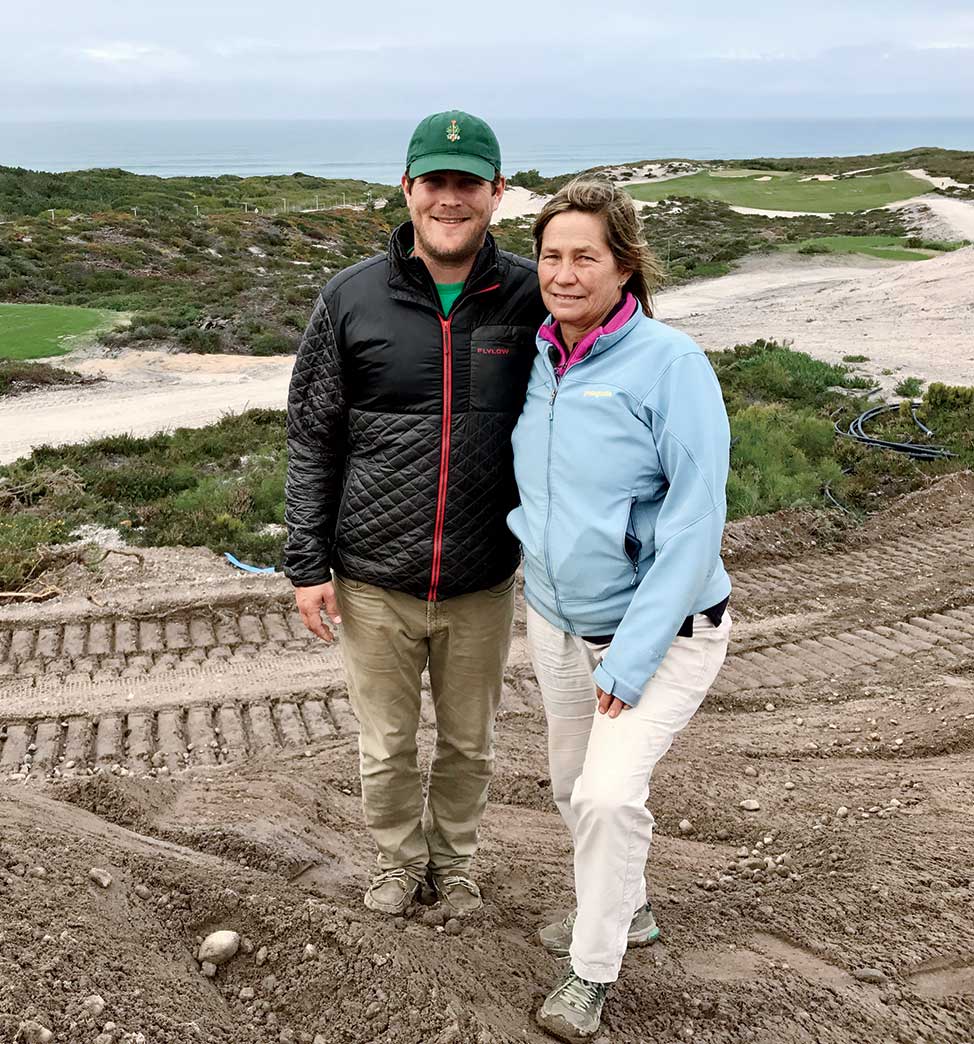
Golf in the area is clustered around Praia D’El Rey, a resort with an eponymous seaside course that Cabell Robinson designed in 1997. Today, its neighboring layouts include Royal Obidos, by Seve Ballesteros, and West Cliffs, which Cynthia Dye (Pete’s niece) finished in 2017, after laboring on the project for almost as long as Kidd did on Comporta.
Dye refers to West Cliffs as “my baby.”
“It’s not often you get to work right by the water, so it’s special,” she says.
West Cliffs is linksy, and ocean views abound. Cup your ears on the back nine and you can hear the waves. The other soundtrack is construction: large homes springing up at an impressive clip.
So much money has been pouring into Portugal that the government recently tweaked its tax code over concerns that foreign investment was sending property values out of reach for the locals. Real estate prices have soared, yet the golf remains a relative bargain. On my morning round at West Cliffs, I’m paired with three buddies-tripping German broheims whose flamboyant neon fashions contrast with their no-nonsense demeanor.
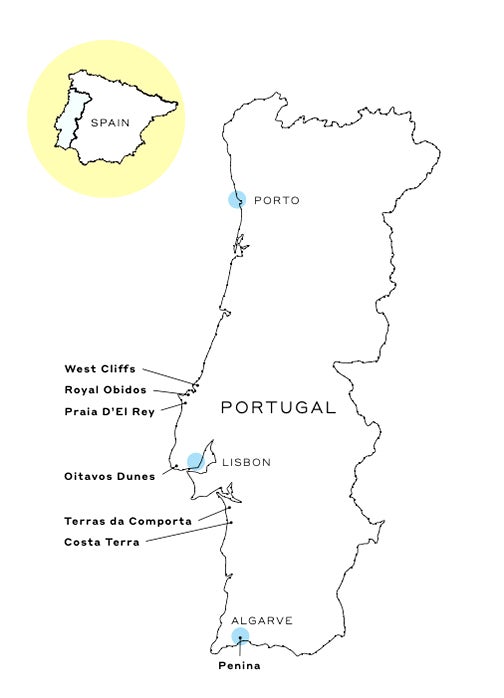
“This place is great value,” one of them, an engineer named Ule, tells me. What he and his pals paid in green fees he can’t recall, since their golf and rooms were bundled. “But it was maybe 60 euros. You can’t get anything close to that at home.”
The Dunas Course charges roughly three times as much. In its planning and branding, the developer behind it is going for laid-back luxe, with a blueprint that promises low-density, eco-conscious real estate on the surrounding coastal land. The target market is still continental Europe, but the hope is to attract more American golfers, who make up a small fraction of rounds played in Portugal.
Out on the course, Kidd and I have reached the 16th hole, a drivable par-4 where the potential payoffs raise the prospect of sandy punishment. It’s find-your-ball fun on a layout intended to play firm and fast, the type of golf for which people travel far these days.
It’s not hard to picture stateside golfers hopping on a plane and escaping, Henry Cotton–like, to warm, coastal weather. A six-hour flight from New York and a quick drive from Lisbon. Easy. Though I wouldn’t want to guess how long it would take by mule.
Portugal, by the numbers
89 — Courses in the country
38 — Courses in the Algarve
17 — Courses in the Lisbon area
25,739 — Average number of rounds per course annually



